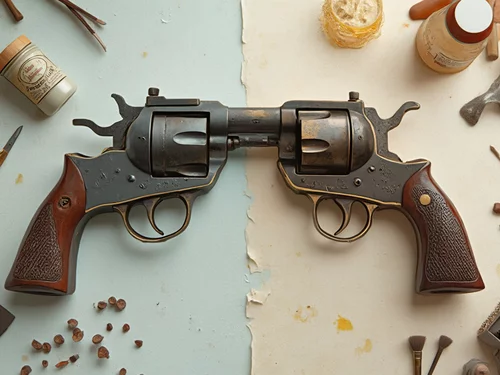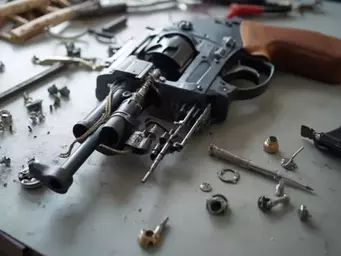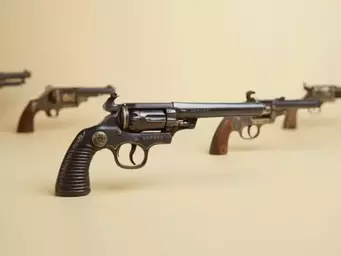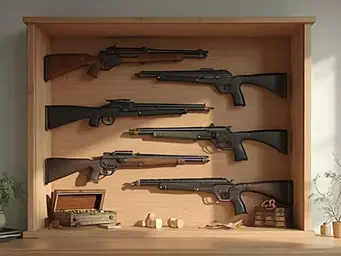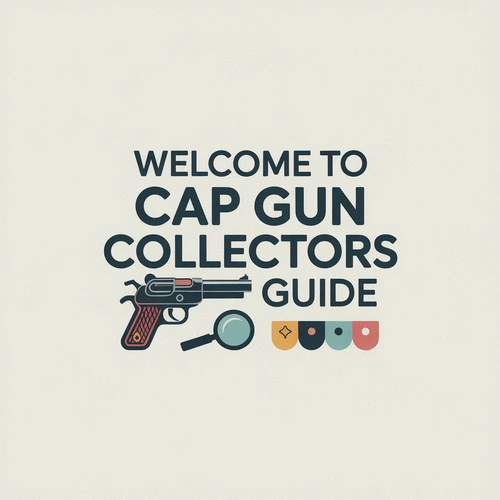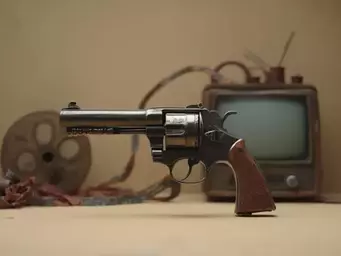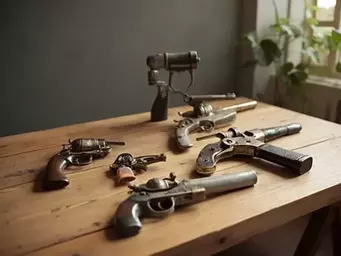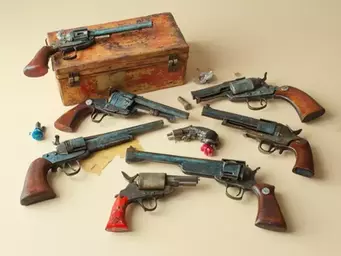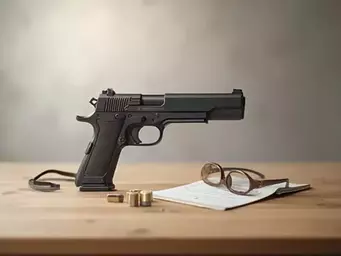What if the restoration of a vintage cap gun could unlock not only its beauty but also its story? The journey of rejuvenating these nostalgic toys is one filled with creativity and patience.
What You Will Learn
- The historical significance of vintage cap guns and their role in toy collecting.
- Key factors that drive demand among collectors, including craftsmanship and community engagement.
- Essential steps in the restoration process, from initial assessment to reassembly.
- The impact of visual storytelling, including the power of before-and-after transformations.
- Valuable lessons learned during restoration, such as the importance of patience and attention to detail.
- Next steps to take in your cap gun restoration journey, including research and community involvement.
Cap Gun Restoration Journey: A Step-by-Step Process
The restoration of vintage cap guns involves a systematic approach, transforming neglected pieces into cherished collectibles. Below is a detailed process flow highlighting the key stages.
1. Initial Assessment
Evaluate condition and collectibility.
- Check for damage.
- Determine historical value.
2. Rust Removal Techniques
Identify best products and methods.
- Gentle cleaning agents.
- Safe rust converters.
3. Disassembly
Carefully take apart the gun.
- Note fragile components.
- Organize parts for reassembly.
4. Repainting
Best practices for original look.
- Matching original colors.
- Protective clear coats.
5. Reassembly
Ensure everything functions correctly.
- Test mechanisms.
- Final adjustments.
6. Final Polish & Display
Showcase your restored piece.
- Apply protective wax.
- Curate display setting.
Unveiling the Art of Restoration: Transforming Rare Cap Guns
As a passionate toy collector, I know firsthand the collectible significance of vintage cap guns. These toys, ranging from the 1900s to the 1950s, are more than just playthings; they carry stories of nostalgia and craftsmanship that deserve to be preserved. Understanding their history can greatly enhance your appreciation for these timeless treasures.
Vintage cap guns not only represent a unique aspect of our childhood but also serve as a glimpse into the past. The craftsmanship involved in their creation makes them valuable artifacts in the eyes of collectors and historians alike. As we delve deeper into this fascinating world, it's essential to recognize the value these classic toys hold.
Understanding the Value of Vintage Cap Guns
Many collectors wonder what drives the demand for vintage cap guns. It’s a mix of historical interest, nostalgia, and the sheer joy they bring. Here are a few key points to consider:
- Historical Significance: Vintage cap guns reflect the socio-cultural context of their times.
- Craftsmanship: The level of detail and engineering in older models is often superior to modern replicas.
- Collector Community: A thriving community exists, enhancing the desire to own these unique pieces.
Understanding these factors not only helps in recognizing the true value of your collection but also fosters a deeper connection with fellow enthusiasts. As we move on, let's explore how the restoration process can bring these artifacts back to life in ways that resonate with their original charm!
Visual Storytelling: The Impact of Before-and-After Transformations
One of the most engaging aspects of restoring cap guns is the visual storytelling that unfolds through before-and-after transformations. It’s astonishing to witness how a little effort can breathe new life into a neglected piece. Sharing these transformations can inspire others within the community!
Photos play a crucial role in documenting your restoration journey. Not only do they showcase the craftsmanship, but they also serve as a powerful reminder of what can be accomplished with patience and dedication. Here’s why visual storytelling matters:
- Inspiration: Seeing the transformation can motivate fellow collectors to take on their own restoration projects.
- Documentation: Capturing the process allows you to track improvements and share techniques.
- Community Engagement: Before-and-after photos create opportunities for discussions and feedback within collector circles.
So, don’t forget to document your journey! The visual aspect of restoration not only highlights your hard work but also contributes to the collective narrative of cap gun collecting.
The Fascinating History of Cap Guns: From Toys to Collectibles
Diving into the history of cap guns reveals an intriguing evolution from simple toys to sought-after collectibles. These toys often reflect the popular culture and technology of their time, making them rich subjects for historians and collectors alike.
From their origins in the early 20th century to their peak popularity in the mid-century, cap guns have undergone significant changes. For instance, early models often contained materials that could degrade over time, leading to a need for careful restoration techniques to preserve their integrity. Here’s a brief timeline of their evolution:
- 1900s: Early models introduced, often made of tin and featuring simple designs.
- 1920s-30s: Introduction of plastic and more intricate designs alongside themed cap guns.
- 1950s: Peak popularity with a flood of colorful and character-driven designs.
Understanding this history not only enhances your appreciation for specific models but also aligns you with the broader community of collectors who share your passion. As we venture further into the restoration process, keep this rich history in mind—it’s what makes each cap gun truly special!
Step-by-Step Restoration Process: Bringing Cap Guns Back to Life
Restoration is an art that requires both skill and a deep love for the craft. I’ve learned that approaching each restoration project systematically ensures the best results. Let’s break it down into key steps that will guide you through the process.
Here’s an overview of what you’ll need to consider:
- Initial Assessment: Evaluate the condition and collectibility of the cap gun.
- Rust Removal Techniques: Identify the best products and methods to use. You might find general principles of material restoration and preservation, even for aerospace components, useful for understanding how to treat historical metals.
- Disassembly: Carefully take apart the gun, noting fragile components.
- Repainting: Learn about best practices for restoring the original look. Understanding the spectroscopic analysis of paints can help in matching original colors accurately.
- Reassembly: Ensure everything functions correctly before finalizing.
With each step, you'll find joy in restoring not just a toy, but a piece of history. Ready to dive into the hands-on part of restoration? Let’s get started!
Pro Tip
When restoring vintage cap guns, consider using a combination of gentle cleaning agents and soft brushes to preserve the original finish. Avoid harsh chemicals that can strip away paint or damage delicate parts, ensuring your restoration maintains both aesthetic and historical value.
Reflecting on the Restoration Journey: What You've Learned
Throughout the restoration process, you may have discovered that it's not just about transforming a vintage cap gun; it's about honing your skills and tapping into your creativity. Each project teaches us something new, whether it's about techniques for rust removal or the delicate balance of maintaining a toy's original aesthetic. Here are some key takeaways that I’ve gathered over the years:
- Patience is Key: Restoration isn't a race. Taking your time ensures a quality outcome.
- Attention to Detail: Small imperfections can make a big difference in the final look of your cap gun.
- Learn from Mistakes: Don't be discouraged by setbacks; they often lead to breakthroughs.
- Embrace the Process: Enjoy each step of the journey, from disassembly to reassembly!
Each of these lessons illustrates the balance between skill and creativity. Embracing them will make your restoration projects even more satisfying and rewarding. Remember, every cap gun has a story, and it's your job to revive it!
Frequently Asked Questions About Cap Gun Restoration
- What makes vintage cap guns collectible?
- Vintage cap guns are collectible due to their historical significance, the craftsmanship involved in their creation, and the thriving community of enthusiasts who appreciate these unique pieces.
- Why is visual storytelling important in cap gun restoration?
- Visual storytelling, particularly before-and-after photos, inspires other collectors, documents the restoration process, and fosters community engagement by sparking discussions and feedback.
- What are the key steps in restoring a vintage cap gun?
- The key steps include initial assessment, rust removal, careful disassembly, repainting to match original colors, and meticulous reassembly to ensure proper function.
- What historical periods do vintage cap guns typically represent?
- Vintage cap guns typically range from the early 1900s to the 1950s, with their designs reflecting the popular culture and technology of those eras.
- What are some important lessons to learn during restoration?
- Essential lessons include the importance of patience, keen attention to detail, learning from mistakes, and embracing the entire restoration process as a creative and rewarding journey.
Your Next Steps in Cap Gun Restoration
Now that you’ve learned about the ins and outs of restoration, it’s time to take action! Begin by gathering your tools and setting aside a space where you can work comfortably. Here are some next steps to consider:
- Research: Dive deeper into specific techniques that interest you.
- Join Forums: Engage with fellow enthusiasts on platforms like Facebook or dedicated cap gun forums.
- Start Small: Consider beginning with a less valuable piece to build your confidence.
- Document Your Journey: Capture each stage of your project through photos or videos to share later!
As you embark on your cap gun restoration journey, remember that the Cap Gun Collectors Guide is here to support you. With tips, community insights, and resources, you’ll have everything you need to succeed!
Join the Conversation: Share Your Restoration Stories
We want to hear from you! Engaging with our community can enhance your restoration experience and inspire others. Share your own before-and-after photos, tips, and stories of your unique projects. Here are a few ways to get involved:
- Post on Social Media: Use hashtags like #CapGunRestoration and tag us to get noticed!
- Comment Below: Share your thoughts on what you’ve learned or ask for advice.
- Submit Your Work: Consider contributing a guest post or a project feature!
By sharing your experiences, you’ll help build a vibrant community of cap gun restoration enthusiasts. So, grab that camera and start documenting your journey – I can’t wait to see what you create!
Recap of Key Points
Here is a quick recap of the important points discussed in the article:
- Appreciate History: Vintage cap guns reflect the socio-cultural context and craftsmanship of their times, adding to their collectible value.
- Visual Documentation: Sharing before-and-after photos of restorations can inspire and engage the cap gun community.
- Systematic Restoration: Follow key steps such as assessment, rust removal, disassembly, repainting, and reassembly for successful restorations.
- Patience and Detail: Emphasizing patience and attention to detail is crucial for achieving high-quality results in restoration projects.
- Community Engagement: Engaging with fellow collectors can provide valuable insights and encouragement throughout your restoration journey.

